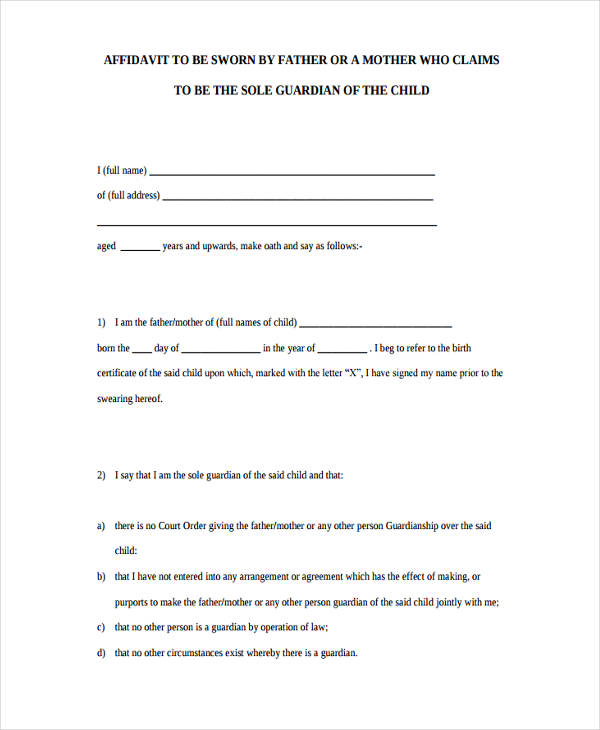
This will make it eligible to be used as evidence in court. You must take the signed affidavit to a notary public who will certify and then notarize the document. Notarizing the document is the last step but the most crucial. Once finished, you should fill in the date you wrote the affidavit and provide your signature.

You must provide your details, such as your name and address. This includes the following:Īn example of where to include court case information in an affidavit Step 2 – Provide your details and your written statement If your affidavit is used in a court case, you should fill in the document’s relevant details.
Forms to go with a sworn statement how to#
How To Write an Affidavit Step 1 – Fill in the court case information (if applicable) Proving a relationship with a deceased individual.Pre-trial interrogatories during legal proceedings.You’ll commonly find affidavits used in the following situations: Think of an affidavit as an out-of-court written testimony swearing you’re telling “the whole truth, and nothing but the truth.” When is an Affidavit Used?Īn affidavit is used when someone is required or asked to make a statement of fact under oath. A sworn statement is faster to process than an affidavit.

However, having a written statement certified and signed by a notary public or another court official can be time-consuming. Most courts prefer a notarized affidavit rather than a simple sworn statement. So in a court case where a statement of facts is required, an affidavit can be seen as more reliable. When a document is notarized, there is less chance that someone coerced a person into signing it. One significant difference between the two documents is that an affidavit is notarized by a notary public, which can give it greater credence in court. Both affidavits and sworn statements can be entered as evidence in a court proceeding. In either circumstance, the signer may be found guilty of perjury if the statement is relied upon and later found to be untrue. ➔ Related: How to Write an Affidavit Difference Between an Affidavit and Sworn StatementĪ sworn statement, also known as a sworn declaration, is similar to an affidavit because it contains a statement a person swears is true.

Meeting these requirements makes affidavits legally binding, and the signer risks the penalty of perjury if they lie. When you write an affidavit and sign it, you’re swearing under the law that the information contained in the document is accurate.Īffidavits are signed voluntarily in the presence of witnesses and notarized by a public official. Affidavits are often used in court proceedings, where a statement of the facts of a matter is required. Affidavit of Paternity What is an Affidavit?Īn affidavit is a legal document containing a written statement sworn under oath. Used to acknowledge paternity for a child born outside of marriage.


 0 kommentar(er)
0 kommentar(er)
